Barbara Sjoholm's Blog, page 7
December 22, 2015
Skumbilar = Chewy Candy Cars

When I first started translating Norwegian, decades ago, I frequently found myself stumped by certain words in fiction, and spent hours either writing to people in Norway or talking to native speakers in Seattle. Sometimes the difficult words belonged to past history, sometimes they were slang words, sometimes they referred to kinds of food or clothing I hadn't encountered before.
The Internet didn't exist then; I couldn't just type in a word or a person's name.
Recently I've been translating a Norwegian novel with a character who loves candy. There are frequent mentions of what she eats and how it makes her feel (remorseful). I'm not a candy eater myself except for the occasional dark chocolate truffle, so when I'm in Scandinavia I never visit the many candy shops or pay much attention to the bags of candy for sale in convenience stores.
This morning I stumbled when I came to a description of the character half-choking on the "shock absorber" of a skumbil. Since I knew she was eating that weird, marshmallow-stiff candy called skumgoderi, literally "foam goodies," I figured it must be in the shape of cars. I decided to see if I could find an image of a skumbil on the Internet.
Who knew that there are forums dedicated to discussing this kind and shape of candy, apparently a Swedish specialty? Also Twitter feeds, Flickr and Instagram and Pinterest pictures. At least now I know what to call them in my translation: Chewy candy cars.
Published on December 22, 2015 10:16
December 10, 2015
Sweden's 16-year-olds to receive We Should All Be Feminists by Adichie

Every 16-year-old in Sweden is being given a copy of Chimamanda Ngozi Adichie’s call to arms, We Should All Be Feminists.
The essay, adapted from Adichie’s award-winning TED talk of the same name, is being distributed in Swedish to high-school students by the Swedish Women’s Lobby and publisher Albert Bonniers. Launching the project at Norra Real high school in Stockholm this week, they said they hoped the book would “work as a stepping stone for a discussion about gender equality and feminism”.
For the full article see The Guardian.
Published on December 10, 2015 07:54
December 3, 2015
Ruth Smith and Júlíana Sveinsdóttir, two painters from the Faroes and Iceland, now in Copenhagen Exhibit

Ruth Smith and Júlíana Sveinsdóttir
100 years ago, women were given the right to vote in Iceland, on the Faroe Islands and in Denmark. To mark the occasion, Reykjavík Art Museum, the National Art Gallery of the Faroe Islands and Nordatlantens Brygge have collaborated to present an exhibition of the works of two female artists: Júlíana Sveinsdóttir from Iceland (1889-1966) and Ruth Smith from the Faroe Islands (1913-1958).
Both artists grew up in bleak, windswept island environments: in Heimaey in the Vestmannaeyjar Islands and Suderø in the Faroe Islands. They were two of the first professional female artists in their respective home countries, where painting in the early 20th century was in its infancy. Both studied at the Royal Danish Academy of Art in Copenhagen.
Both of them portrayed the nature of their home countries with a profound sense of colour and of the enormous power of nature in the eternal struggle between land and sea. Even though they lived from time to time in Denmark, they still preferred to paint island landscapes.
The exhibition provides an insight into the capacity of these two artists, not only to interpret landscape, but also to paint portraits both of themselves and of their contemporaries. What both artists had in common was their devotion to the self-portrait, where they hid nothing: neither melancholy nor old age.
The exhibition has been organised in collaboration with Reykjavík Art Museum, the National Gallery of the Faroe Islands and supported by the Nordic Culture Fund.
Curator: Hrafnhildur Schram.
14 November 2015 - 10 January 2016North Atlantic House (Nordatlantans Brygge)Copenhagen
Published on December 03, 2015 10:04
September 7, 2015
Fall readings and workshops: Fossil Island and The Former World
 If you're in the Puget Sound area, please join me for one of several events in the next two months to celebrate the publication of my novels inspired by the relationship between Emilie Demant Hatt and Carl Nielsen October 2, Friday, at 7:30 p.m. at the Swedish Club, 1920 Dexter Ave N, Seattle, WA 98109. In honor of the Danish connection, the Club’s chefs will be preparing a tasting menu of Danish treats, available from 6 p.m. on. If you’ve never been to the Swedish Club, it’s a fabulous World’s Fair-era building with a view of Lake Union and a cocktail bar out of “The Jetsons.”
If you're in the Puget Sound area, please join me for one of several events in the next two months to celebrate the publication of my novels inspired by the relationship between Emilie Demant Hatt and Carl Nielsen October 2, Friday, at 7:30 p.m. at the Swedish Club, 1920 Dexter Ave N, Seattle, WA 98109. In honor of the Danish connection, the Club’s chefs will be preparing a tasting menu of Danish treats, available from 6 p.m. on. If you’ve never been to the Swedish Club, it’s a fabulous World’s Fair-era building with a view of Lake Union and a cocktail bar out of “The Jetsons.”November 1, Sunday, 3 p.m. at the Nordic Heritage Museum, 3014 NW 67th Street Seattle, WA 98117. I’ll be talking for the novels and signing books before a 4 p.m. concert with the Novus Project featuring Carl Nielsen’s work (tickets for the concert are available at www.nordicmuseum.org $15 for Museum members, $20 general admission).
November 14, Saturday, 7 p.m. at the Writers' Workshoppe in Port Townsend, 820 Water Street, PT, 360 379 2617. Earlier that day (10-3), I'll be giving a workshop on Writing Historical Fiction.
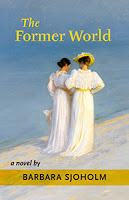 Sjoholm gives readers vibrant characters whose personal travails are all the more engrossing for the cultural upheavals that energize them. An entertaining, thoughtful story of old-fashioned romance, complicated by dawning modern mores. –Kirkus Reviews
Sjoholm gives readers vibrant characters whose personal travails are all the more engrossing for the cultural upheavals that energize them. An entertaining, thoughtful story of old-fashioned romance, complicated by dawning modern mores. –Kirkus ReviewsThese are thoughtful, glitteringly intelligent novels, as shrewd about shifting social conditions as they are about the workings of the human heart. – Editor’s Choice, Historical Novel Review
In Fossil Island, Nik is a fourteen-year-old tomboy who spends her time dreaming and fossilizing on the nearby island of Fur, a geologic marvel. Her older sister Maj is studying to be a teacher but is starting to entertain ideas of women’s rights introduced by her new friend Eva Sandström. Both girls know they must marry eventually—just not yet. The summer of 1887 begins with a visit from the girls’ aunt, who brings with her from Copenhagen a young man of twenty-two, who plans to become a composer. Flirtation turns to a secret romance between Nik and Carl, as Maj weighs an engagement over her intense friendship with Eva. The following summer brings the sisters’ intertwining stories to a head as they spend a month in Copenhagen and juggle passion, jealousy, and violent events with how they can find independent lives of their own.
The story of Nik and Maj continues in the sequel, The Former World. Now sixteen, Nik resumes her relationship with the passionate Carl Nielsen, who comes once more for a summer visit in 1889 to her provincial village. But their bonds are strained by convention and Nik’s own stirrings of ambition to study art. Now twenty-one, Maj finds a teaching job, but her mother hasn’t given up the idea her eldest daughter will marry. Taking place over the course of two dramatic years, the sisters’ lives will be utterly changed by love, heartbreak, illness, and death. A vivid portrait of two stubborn daughters who love their family, but yearn for freedom on their own terms, The Former World recreates a time when women’s lives and Danish society were in transition. Whether it’s Nik learning to cycle or Maj dreaming of working in Brooklyn as a teacher, Nik and Maj are memorable characters in a setting both distant in time yet familiar.
~"Fossil Island reads as well as any Jane Austen novel, but its political themes and social commentary really matter to the 21st-century reader. As in an Austen book, the characters are engaged with house parties, daily activities, relationships and, always and especially, conversations. However, this novel not only offers an insightful, engaging view of personal manners, social mores and romantic love, but also it deals with the politics of manners, mores, and love. In particular it illuminates the social history of women of the time, including lesbians and other women who wanted to live independent lives. Fossil Island brought to mind the wonderful and internationally acclaimed historical novels of Sarah Waters. Fossil Island, like Waters’s books, made me gasp out loud at its plot turns. The characters are so richly drawn, so compellingly human and difficult and funny and likable, and their interactions so humanly complicated, so impossible and so tender, that I think any fiction reader or history lover will read this, as I did, with avid enthusiasm.” ––Gillian Kendall, author of How I Became a Human Being~
“Barbara Sjoholm transports us to Denmark in the 1880s, a time when traditional customs and ideas were giving way to new technology and modern thinking, and enchants us with the story of a girl’s first love.Fossil Island captures beautifully the conflicting worlds the young lovers Carl and Nik move between: the harmony and lazy rhythms of village life on Jutland’s Limfjord, the dissonance and hectic tempos of Copenhagen. Nik experiences these disparate worlds with the apprehension and excitement of adolescence. In the city and the countryside she listens to young men and women debate the new ideas, but it is in the city Nik meets women who, by living life on their own terms, will make history and guide her on her own path: artists, writers, musicians, even her older sister’s feminist classmate who sails to America in search of work and adventure. Fossil Island is a book to savor—you won’t want to put it down, you won’t want it to end. ––Katherine Hanson, editor of An Everyday Story: Norwegian Women’s Fiction
Ordering information: www.cedarstreeteditions.com
Published on September 07, 2015 17:08
July 29, 2015
Remembering Faith Fjeld
[image error]Faith Fjeld (1935-2014)
Faith Fjeld was, among many other roles in life, the founding editor of Baíki. This international Sami journal was one of the first publications to give voice to Sami descendants in North America, in the context of the worldwide indigenous people's movement. The journal came out on an irregular basis, but in the end the 37 issues, full of thoughtful personal articles, book reviews, art, and photographs from Sami descendants and from writers and artists in Sápmi, such as Harald Gaski, Elina Helander-Renvall, and Hans Ragnar Mathisen, formed a portrait of an emerging movement.
Guided by Faith’s warmth and vision, the journal made space for talk, memories, and sometimes hard truths. I loved to read it and contributed a book review at one point. It was where I became aware of all the work Faith and others like Nathan Muus and Ruthanne Cecil had done to archive Sami material and to create exhibits about the Sami reindeer herders history in Alaska.
Now the last issue of Baíki has come out, #38, Summer 2015. Not only does it tell the story of Baíki and of Faith’s life, but it contains stories and memories from many of those who knew her well. Their moving words are testament to Faith’s profound and enduring influence.
In 1991, in the first issue of Baíki, Faith wrote: “It is my hope that Baíki will represent the reawakening of the Sami spirit in America, a spirit that has been dormant for many decades. . .The clandestine immigration of thousands of our ancestors to America under the guise of being ‘Norwegian,’ ‘Swedish,’ and ‘Finnish’ has created generations of descendants whose Sami identity has either been totally lost, or treated like an amusing joke to be disclaimed whenever it surfaced. . .Supposedly well-researched books and scholarly papers on Scandinavian-American Immigration ignore us completely.” Faith Fjeld was an inspiring mentor to many and Baíki was a catalyst for Sami awakening. Her journal, she wrote, “will celebrate the survival of Sami roots and Sami connections.”
For more about Faith Fjeld, seen through the eyes of those who admired and loved her, see http://www.baiki.org/content/FaithFjeld.htm
Published on July 29, 2015 10:54
April 3, 2015
"Fur, the Fossil Island" in The Island Review
Just published in the online journal, The Island Review, my essay about the fossil-rich island of Fur in Denmark's Limfjord. The essay weaves together the geology of the island and theories of fossils and time from the nineteenth century, both of which play a role in my novels, Fossil Island and The Former World.
"What is plot if not eruptions and cataclysms in the midst of more gradual change; what is character if not the result of past events; what are fossils if not whole and fragmented memories buried in layers of stone and then thrust up again to the surface from time to time?" the essay asks.
To read it in full, go to The Island Review .
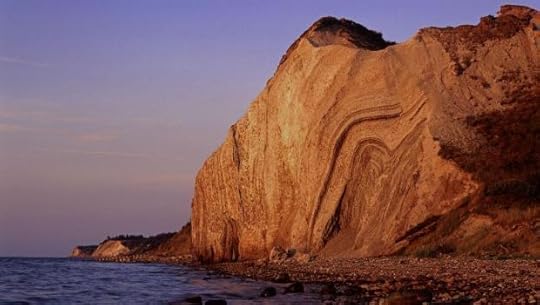
Published on April 03, 2015 16:10
March 15, 2015
Kiruna, on the Move
 Kiruna, the Swedish mining city above the Arctic Circle, will soon begin its move to a site some two miles away from where it is now. The BBC magazine has the details of what will be an unprecedented, epic displacement and a chance to create a whole new city. A few historic buildings, like the famous church from 1912 pictured below, will be taken to pieces, transported, and reassembled, but most will simply fall to the wrecking ball. Nearby, a new complex of apartments, office buildings, schools, and train station will come into being. It's going to be an enormous undertaking, full of challenge and loss.
Kiruna, the Swedish mining city above the Arctic Circle, will soon begin its move to a site some two miles away from where it is now. The BBC magazine has the details of what will be an unprecedented, epic displacement and a chance to create a whole new city. A few historic buildings, like the famous church from 1912 pictured below, will be taken to pieces, transported, and reassembled, but most will simply fall to the wrecking ball. Nearby, a new complex of apartments, office buildings, schools, and train station will come into being. It's going to be an enormous undertaking, full of challenge and loss.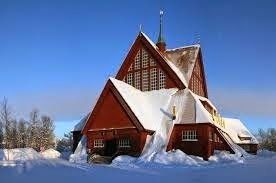 This news is not news, in a way. Ever since it became obvious in the early 2000s that the iron ore mine was impinging on the city, it's been obvious that something needed to be done, and equally obvious that the mine was not moving elsewhere. Residents have been coping with cracks in the streets and some buildings from the underground blasts. The last time I was in Kiruna, in 2005, I could hear the noise and feel the shaking for myself. In ten years, it's gotten worse.
This news is not news, in a way. Ever since it became obvious in the early 2000s that the iron ore mine was impinging on the city, it's been obvious that something needed to be done, and equally obvious that the mine was not moving elsewhere. Residents have been coping with cracks in the streets and some buildings from the underground blasts. The last time I was in Kiruna, in 2005, I could hear the noise and feel the shaking for myself. In ten years, it's gotten worse. Kiruna is only about a hundred years old. From a ramshackle bunch of shacks made from packing crates where the miners spent freezing winters and muggy summers, two little towns grew up. One architect-designed housing community was created very near the mining operations, at the base of the mountain of Kirunavaara. The other community was built across a lake on another hillside. This became the center of Kiruna, designed as a kind of utopian hill town, with a mix of wooden houses, winding streets, and stairways. Some of those utopian ideas didn't work out and already, with the advent of car and bus traffic, the growing city did away with some of the winding streets and built more typical, boxy and utilitarian mid-century sports halls and city buildings. Still, the city has been an interesting mix of old and new. From this spring, however, as a new Kiruna rises two miles away, the old Kiruna will begin to be abandoned.
You can read more about Kiruna's architectural and social history, the iron ore mine, and my travels to the city and inside the mine in my book, The Palace of the Snow Queen.
Published on March 15, 2015 09:22
March 10, 2015
The Striped Armchair's review of With the Lapps
One of my favorite book bloggers, Eva at the Striped Armchair, has written a lovely review of With the Lapps in the High Mountains from somewhere in the snowy Northeast. Perfect conditions for reading about the freezing, but beautiful cold winter Emilie Demant Hatt experienced when living with the Sami in 1907-1908.
Published on March 10, 2015 18:14
March 4, 2015
Writing Historical Fiction about the Young Carl Nielsen and (Younger) Emilie Demant Hatt
I first encountered the name of the Danish artist and ethnographer Emilie Demant Hatt (1873-1958) in Northern Norway in 2002, in connection with the Sami wolf hunter and writer, Johan Turi. Together they collaborated on a book he wrote, Muitalus sámiid birra [An Account of the Sami], which was published in 1910. She published her own book, With the Lapps in the High Mountains, a few years later.
Her life as an early woman anthropologist and expressionist painter begged for more investigation. I began that work—translation and essays, mostly—within a year or two of first hearing her name. I then wrote about her and Turi in my travel narrative, The Palace of the Snow Queen: Winter Travels in Lapland in 2007 and in the introduction to my English translation of With the Lapps (2013). My research on her has gone on for many years now, in archives in Copenhagen and Stockholm, and in multiple visits to different landscapes in Scandinavia. I’m two-thirds through a long manuscript about her ethnography and art, with a focus on her relationship with Turi.
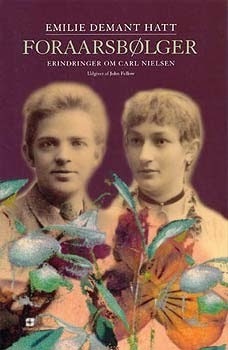 Yet there’s always been another aspect to Emilie Demant Hatt’s life that’s intrigued me, and that on the surface has little to do with her later career. This is her youthful romance, in the late 1880s, with Carl Nielsen, Denmark’s best-known composer. She was fourteen when they met; he was twenty-two and decidedly unfamous. From a very poor family in Odense, Carl had been taken up by Emilie’s wealthy aunt and uncle, who moved to Copenhagen to give him a home.
Yet there’s always been another aspect to Emilie Demant Hatt’s life that’s intrigued me, and that on the surface has little to do with her later career. This is her youthful romance, in the late 1880s, with Carl Nielsen, Denmark’s best-known composer. She was fourteen when they met; he was twenty-two and decidedly unfamous. From a very poor family in Odense, Carl had been taken up by Emilie’s wealthy aunt and uncle, who moved to Copenhagen to give him a home. This part of Carl’s life was something of a mystery to his later biographers; that it is known at all now is due to Emilie’s memoir, Spring Waves [Foraarsbølger] that was discovered as a typescript around the year 2000 in a box in Denmark’s Royal Library by John Fellow, a Danish writer who was putting together a collection of Carl Nielsen’s complete letters. With the typescript were some letters from Carl to Emilie, a few photographs, and a gold locket in the shape of a heart. Spring Waves, written sometime in the 1940s, when Emilie was in her seventies, was a memoir of her adolescence and the relationship with Carl. It had been delivered to the library on her death in 1958 with instructions that it not be read for twenty-five years. By that time, it was forgotten. John Fellow published it with a brief introduction and additional photographs in 2002. I read it the following year when I was in Denmark to take my first look at some of Emilie’s artwork.
In my early writing about Emilie Demant Hatt as an ethnographer, this attachment to Carl Nielsen could only be mentioned in passing, as a curious biographical fact. There wasn’t much more information than what Emilie provided in her memoir or that was to be found in Carl’s handful of passionate, amusing, self-revealing letters. Still, I often thought about writing something more about their relationship. John Fellow’s view was rather romantic I thought—and of course the attachment was romantic, for both of them. Yet the complexities of the era and of their different experience of life–––gender-wise, age-wise, class-wise––showed tension and conflict as well. In Emilie’s memoir are hints of sexual pressure from the older and more experienced Carl and more than a few references to her worry about their age gap and his personality. She was far too young to marry and his inability to be with her made him troubled and moody. Secrecy and dramas developed: he threatened suicide and flirted with girls in Copenhagen; she suffered silently in her provincial village. They parted. He married, she became engaged. Later in life they came to know each other again, with their spouses, and even to play cards together occasionally in the late 1920s in Copenhagen.
The secrecy, the silence, the lack of sources all intrigued me. In my research on Emilie’s career I had been all too aware of an abundance of material, much of it uncatalogued: books, articles, photographs, piles of newspaper clippings, bundles and boxes of correspondence, and of course many works of art, from sketchbooks to the dozens of canvases with motifs from Sápmi she painted in her sixties and seventies. If anything, I had a surfeit of archival material, most of it in Danish, much of it in her handwriting, little of it organized. Carl Nielsen and Emilie Demant Hatt's relationship didn’t fit into my nonfiction project where everything must be followed up and verified, sourced and footnoted.
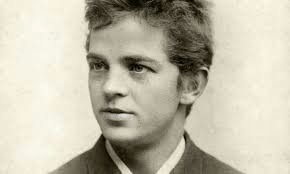 The Young Carl NielsenYet I still wanted to write about the pair of them. I wanted that increasingly. I wanted to write about Denmark, its provinces and its capital. I wanted to write about the violent discussions about male and female needs and desires during the “Morality Wars” of the 1880s, and about a young girl who meets a young man who opens up the world to her. I wanted to write about the village of Selde on the Limfjord, and about the island across the fjord, Fur, which is known for its geology and Eocene fossils. I wanted to write about Emilie’s family, her father and mother, and her Aunt Marie, about her cousins and uncle Hans in Odense, who had a bicycle factory. I wanted especially to write about Emilie’s relationship with her sister Marie, five years older, who became a schoolteacher. I wanted to write about women’s friendships and their love for each other. I wanted to write about the feminists of the era and the conflicts they faced regarding marriage or art or work, for they could rarely have everything.
The Young Carl NielsenYet I still wanted to write about the pair of them. I wanted that increasingly. I wanted to write about Denmark, its provinces and its capital. I wanted to write about the violent discussions about male and female needs and desires during the “Morality Wars” of the 1880s, and about a young girl who meets a young man who opens up the world to her. I wanted to write about the village of Selde on the Limfjord, and about the island across the fjord, Fur, which is known for its geology and Eocene fossils. I wanted to write about Emilie’s family, her father and mother, and her Aunt Marie, about her cousins and uncle Hans in Odense, who had a bicycle factory. I wanted especially to write about Emilie’s relationship with her sister Marie, five years older, who became a schoolteacher. I wanted to write about women’s friendships and their love for each other. I wanted to write about the feminists of the era and the conflicts they faced regarding marriage or art or work, for they could rarely have everything.

And so, tentatively, I began to sketch out a novel, modeled on the nineteenth-century novels of love and marriage and women’s emancipation, about a girl named Nik (her family’s name for Emilie), a tomboy who met a man the summer she was fourteen and whose life was changed. That novel became Fossil Island and, because nineteenth-century novels are long, it eventually had to be divided into two, with a sequel, The Former World. It took me a long time to think about what I wanted to say and how to say it fictionally, and how to keep Nik’s story separate from the other story (the researched and verified biography) about the real person, Emilie Demant Hatt. I kept to the correct years, and the history provided in Spring Waves, and to the main cast of characters in her life, who preserve their true names except for the nicknames I give them (Nik and Maj). And I did masses of historical research, in Denmark on the ground and through reading, to verify all the details of dress and food and what was in the newspapers and what events were taking place.
Whether I’ve succeeded in the novels in recreating that world, I don’t know yet. After all, I’m not Danish and my understanding of the time period is second-hand and filtered through other books I’ve read from Scandinavia. But I do know that when there are few sources, there is an opening for the imagination. It is through that door that fiction flourishes and perhaps makes an invented reality that is just as true, or at least as convincing, as what really happened. As I wrote in my Afterword to The Former World,
“All historical fiction is an attempt to revisit and to some extent rewrite the stories of the past through the prism of our contemporary understanding. Many aspects of Emilie’s early biography are familiar from nineteenth-century novels about women’s constricted lives. What was unusual for the time is that Emilie eventually made a life for herself as an independent scholar-writer, adventurous traveler, and expressionist painter.”
These novels, then, are an attempt to piece together and imagine the life of the young girl who became the woman I would later study for her many contributions to ethnography and art in Scandinavia.
Both Fossil Island and The Former World are available as e-books from Amazon and other e-book retailers. If you don't have an e-reader you can still read the books on your computer through Amazon's free Kindle app.
Published on March 04, 2015 09:18
March 1, 2015
Just Published: Two Novels about Emilie Demant Hatt and Carl Nielsen
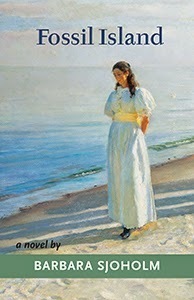 I’m really pleased to announce that my novel about the young Emilie Demant Hatt, Fossil Island, and its sequel, The Former World, are now available as e-books for the Kindle, Nook, and Kobo reader. They join a number of other titles of mine, both fiction and nonfiction, that have been or are being digitized and finding new life in electronic form. In the next few blog posts I’ll talk more about the historical background of Fossil Island and The Former World. I’ll also write about Carl Nielsen, who’s having an anniversary year in 2015 to much fanfare in Denmark andelsewhere.
I’m really pleased to announce that my novel about the young Emilie Demant Hatt, Fossil Island, and its sequel, The Former World, are now available as e-books for the Kindle, Nook, and Kobo reader. They join a number of other titles of mine, both fiction and nonfiction, that have been or are being digitized and finding new life in electronic form. In the next few blog posts I’ll talk more about the historical background of Fossil Island and The Former World. I’ll also write about Carl Nielsen, who’s having an anniversary year in 2015 to much fanfare in Denmark andelsewhere.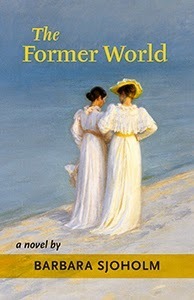 The novels take place from 1887 through 1891 in Denmark and tell the story of two sisters. When Fossil Island begins, Emilie Hansen, called Nik by her family, is a fourteen-year-old tomboy who spends her time dreaming and fossilizing on the nearby island of Fur. Her older sister, Maj, is studying to be a teacher and starting to entertain ideas of women’s rights introduced by her Swedish friend, Eva Sandström. Both girls know they must marry eventually—just not yet.
The novels take place from 1887 through 1891 in Denmark and tell the story of two sisters. When Fossil Island begins, Emilie Hansen, called Nik by her family, is a fourteen-year-old tomboy who spends her time dreaming and fossilizing on the nearby island of Fur. Her older sister, Maj, is studying to be a teacher and starting to entertain ideas of women’s rights introduced by her Swedish friend, Eva Sandström. Both girls know they must marry eventually—just not yet. The summer of 1887 begins with a visit from the girls’ aunt, who brings with her from Copenhagen a young man she calls her foster son. Carl Nielsen, from a poor family, has just finished at the Royal Conservatory of Music and plans to become a composer. Flirtation turns to a secret romance between Nik and Carl, as Maj weighs an engagement to Lieutenant Frederik Brandt against her intense friendship with Eva. The following summer brings the sisters’ intertwining stories to a head during a month in Copenhagen with their aunt, where they juggle passion, jealousy, and violent events with their search for independent lives of their own. In the sequel, The Former World, sixteen-year-old Nik resumes her relationship with Carl Nielsen, who returns for a summer visit to the provincial village. But their bonds are strained by convention, by Carl’s dream of becoming a great composer, and by Nik’s own stirrings of ambition to study art. Now twenty-one, Maj finds a teaching job away from home, but her mother hasn’t given up the idea that her eldest daughter will marry. Over the course of two dramatic years, the sisters’ lives will be utterly changed by love, heartbreak, illness, and death. A vivid portrait of two stubborn young women who love their family yet yearn for freedom, the novels re-create a time when women’s lives and Danish society were in transition. Whether learning to cycle or dreaming of teaching school in Brooklyn, Nik and Maj are memorable characters in a setting both distant in time and familiar.
Fossil Island and its sequel, The Former World, are inspired by the true story of Denmark’s greatest composer, Carl Nielsen, and by the life of Emilie Demant Hatt, who later became an artist and ethnographer in Lapland. For more about her see www.emiliedemanthatt.com
Published on March 01, 2015 10:39



